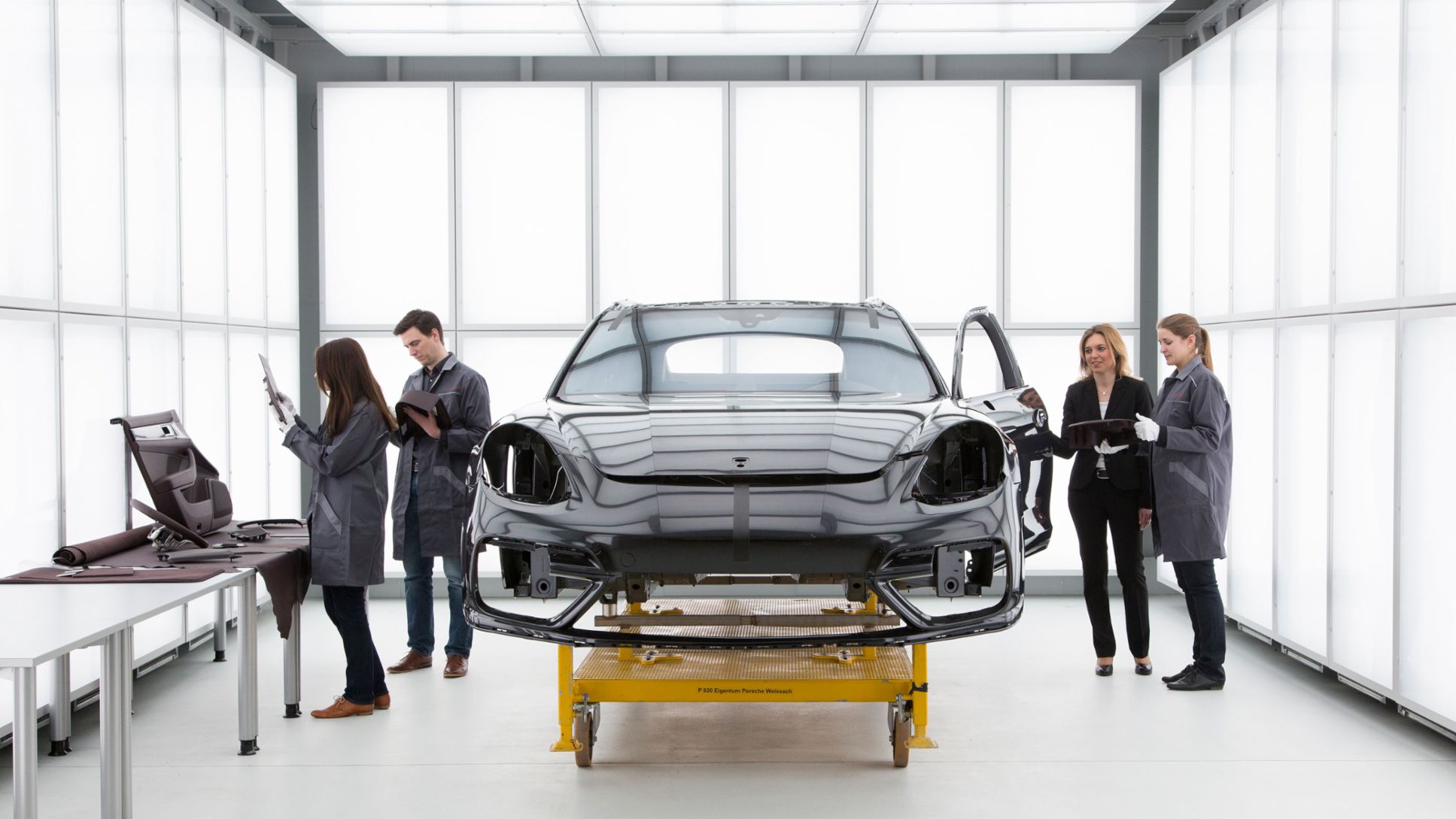The extraordinary quality of Porsche is all in the detail. This quality is clear to see at all times in the vehicle interior, and is at its very best when nothing is too conspicuous.
“More than 600 visible components must be coordinated in a unifying colour scheme”, says Frank Moser, Vice President Corporate Quality at Porsche AG. “As our vehicles are highly individualised, this is an extremely complex process”. For example, the interior of the new Porsche Panamera can be ordered in five single-tone colours and five further two-tone variants. In practice, this means that everything from the carpet to the full interior and roof lining are in the same colour scheme, and are compatible in every lighting situation.
The interior colours are defined by the Style Porsche designers. The next step is to create a master colour sample that is used to evaluate leathers, paints, plastics, films, fabrics, carpets and threads. The challenge is in picking exactly the right colour tone so that there are no clashes. The result can only be considered perfect when every part installed in the interior produces a uniform picture in combination with all other visible components of the same colour tone.
The finest nuances in colour or variations in gloss level on the surface determine the total colour harmony. “Even minimal deviations are perceived by the human eye, creating a visual patchwork”, says Simone Fett, Head of Colourmatching Interior, who works with her team to create that feeling of contentment in the interior of all models. Colour-matching is based on the high benchmarks of Porsche quality. The goal of colour-matching is to ensure that the purchased parts in production vehicles have no differences in colour and, for example, the Marsala-coloured interior is a harmonious match for the new Porsche Panamera.
Some 40 different materials are used in the interior of the new Panamera
Fine adjustments are made in a special lighting booth. “The road begins a full 18 months before the run-up to production”, explains Fett, a chemical engineer. She shows various components from an early phase that range from virtually white through to violet, but do not correspond at all to the Marsala red master. Five factors play a role in component manufacture: the material, the tool, the process, the process parameters and the colour pigment mixtures. Each colour tone is developed using different pigment formulations. However, each formula reacts slightly differently depending on the material or process, meaning the colour tone of the finished part can deviate from the specification. Some 40 different materials are used in the interior of the new Panamera, and more than 70 suppliers are involved in the colour-matching process for the purchased parts. “Finding the way to the right colour is an iterative process”, explains the expert Simone Fett. “It is like a big puzzle. Gradually, the passenger compartment transforms from an inharmonious colour picture to a homogeneous design. This requires a high degree of precision and great attention to detail”.
Before a new interior colour can go into series production, four colour examinations take place. All 600 visible components are then installed in a body-in-white. When the components are placed directly alongside each other in this way, any differences are clearly revealed. The deviations are recorded metrologically using a spectrophotometer. For example, it may be that the target colour of Marsala contains the correct amount of red, but a little too much blue, and is just slightly too dark. In addition, the surface gloss is recorded with a reflectometer. The calculated values are used to make any necessary corrections. The next colour examination will see everything tested again – and ideally, the colour tone will then be chosen, or will at least be much closer to the target specification. When measuring the colour, the spectral reflection value is identified using a standardised colour system. Each colour tone is then uniquely defined with a three-dimensional spherical model.
A special physical feature is the metamerism: the specific colour properties of pigments in different lighting conditions. This means that a component that perfectly corresponds to the colour Marsala in daylight may show considerable colour deviations in the artificial light of a garage. The pigments must therefore be mixed in such a way that there is always a uniform colour tone in three standard lighting situations. “We can switch between these light colours in the light studio at the touch of a button in order to judge the colour effect in each situation”, explains Simone Fett.
The objective: creating a general feeling of contentment
Despite all of the complex, high-precision measurement technology used, it is ultimately the human eye that decides on a harmonised colour effect in the whole passenger compartment. The objective of colour-matching is achieved when the passenger compartment of the Porsche creates a general feeling of contentment.
However, the specialist department of Colourmatching Interior not only contributes technological expertise on materials, chemicals, colours and manufacturing techniques within the quality process for series preparation purposes, but is also involved at an early stage in testing the feasibility of new colour tones and materials from the Porsche Design Studio.


